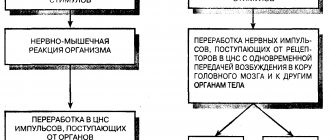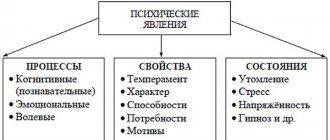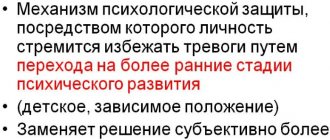It is amazing how and under what circumstances leadership qualities are formed in a person. In what proportions should they be mixed to create a person who is devoid of doubt in himself and his own abilities, active in any manifestation, thinking outside the box, acting decisively and capable of uniting any disparate group for a common goal?
Anyone can become a leader, since the qualities discussed below are present to one degree or another in every person. But, as it turned out, this role is not suitable for everyone and not everyone is satisfied.
A few words about the concept
This is the ability to organize and captivate a mass of individuals, to make one’s own idea a priority for hundreds and thousands of others, and to single-handedly achieve what seemed impossible.
The lives of celebrities and great figures have been subjected to careful analysis by psychologists, sociologists and political scientists. And based on these studies, skills and abilities were identified that help unlock the potential of an ordinary person and its realization in society.
According to one of the many definitions, leadership is a process of influencing society, when an individual can resort to the help of others in order to achieve common goals. To study such influence, it is necessary to understand who a leader is and what set of qualities he possesses. But we will touch on this topic a little later.
Power
This concept, which is directly related to leadership, cannot be ignored either. Power is the ability to impose one’s will, the ability to control people even despite their resistance.
What do power and leadership have in common? Influence. And also that both qualities should be characteristic of every leader. For an organization to function effectively, power must be exercised. If a manager does not possess it, then he will not be able to influence the people on whom the activities of the enterprise depend.
There are also significant factors that distinguish the concepts of power and leadership. And this is balance. If we are talking about power, then it is necessary. A smart leader realizes that his subordinates also have power over him. After all, they are the driving force of his enterprise. Therefore, the manager must manage employees so that they do not develop a feeling of rebellion and protest.
Essence
Any system related to the socio-economic sphere needs a leader. After all, the main resources for its improvement are the potential, talents, strength and productivity of subordinates, as well as the manifestation of initiative. And all this is put together by those who have leadership qualities.
This feature is an inspiring, tactical and generative aspect in the formation of any group. And in the executive key, his operational, organizational role, designed to “keep the fire going,” comes to the fore.
It can manifest itself in how a person knows how to organize work activities despite the complexity of the tasks, convince employees to achieve goals, form a general picture of the future and maintain motivation to work.
The very concept of “leadership” in psychology comes from the German word “lead”, translated meaning “path”. Therefore, a leader is one who leads and shows direction.
His fundamental responsibility is to help others adapt painlessly and quickly to changing conditions and apply a creative approach to their work. In addition, the property aims to encourage employees to share knowledge, gain skills and experience through corporate courses and training, and develop new skills.
But quality can be of two types:
- formal;
- informal.
In the first case, this is a leader who should be obeyed. It is he who distributes responsibilities among subordinates. But in the second, the impact occurs due to a person’s personal traits. Often such a leader has greater influence on the opinion of the team.
Personal model of leadership
In simple words, this is a set of personal and professional qualities that effectively correlates with the assigned tasks.
There are countless personality models, just like the leaders themselves. However, there is a universal one. It is believed that the ideal leadership model is the sum of personal qualities and acquired skills, multiplied by psychological attitude and behavioral competence.
Another example is often given a model developed by Ralph Stogdill, an American psychologist, doctor at Ohio State University. It includes:
- A combination of innate characteristics and temperament.
- Individual traits developed throughout life.
- Behaviors acquired as a result of mastering communication and thinking skills.
- Crisis situations that require resolution and serve as an incentive for self-development.
According to this model, the personal assessment of a leader directly depends on his socio-economic and intellectual capabilities, as well as on life values, activity and needs.
Varieties
The term “leadership” comes from psychology. This process involves social influence, when a person receives help from others to achieve a common goal. The set of characteristics of a leader depends entirely on what type he belongs to.
The most famous classification identifies the following types:
- Business. Places in teams united by work or production tasks. Here you will need such features as competence, experience, the ability to make quick decisions, as well as authority. The main requirements in this case: productivity and creative thinking.
- Emotional. Characteristic of psychological groups. A person gains weight due to individual sympathies and his own charisma and charm. Such a leader must inspire respect, trust and love among those around him.
- Situational. It can belong to both the first and second categories. Its difference is that it is unstable. Expressed under specific circumstances, such as during an emergency.
But there are also differences in terms of the scale of issues within the competence of a specialist. According to this condition, they distinguish:
- Everyday - in a school or university environment, in leisure organizations, in the family circle.
- Social – sports or creative associations, production or trade union companies.
- Political – figures of the state and society.
Classification based on leader functions
- Organizer. His needs are the needs of the entire group. Therefore, he is active in achieving common goals.
- Fighter. He is characterized by such traits as perseverance, self-confidence, perseverance and developed willpower. He is no doubt entering the fray.
- Creator. Possesses innovative, creative thinking and solves problems of any complexity. He follows a method of communication rather than giving orders.
- Comforter. The strength of such a person is empathy. He treats everyone with respect, shows understanding and empathy.
- Diplomat. The situation is under his control and he masters it down to the smallest detail. This person knows how and on whom he can influence.
It is important that in any society several of the species described above may be present. Each of them takes its place and does not compete with the others.
Psychologist Daria Milai
Make an appointment
Who is an anti-leader
An anti-leader is a person who is in power, but does not have the qualities that can force the crowd to act voluntarily for his interests. His behavior does not inspire respect, and his personality does not inspire sympathy.
The anti-leader stands still, is not ready to develop and change. He is confident in his own rightness and is not able to deviate from the original plan. He does not create his own behavioral strategy, but uses already tested methods. Such a person does not adhere to principles; he easily says one thing and acts differently, without taking into account the opinion of the group. For him, the main thing is that people support him and agree; their point of view is not of interest.
An anti-leader provokes conflicts with his behavior, does not monitor harmony in the team and does not want to reconcile the differences that arise. He does not try to support or help, does not provide explanations, or they are so brief that they are not useful. He simply gives out commands using a controlling approach, and may raise his voice or insult a team member.
Anti-leader
Leadership skills are necessary for a person to find support to achieve a goal. Not everyone can earn the respect and love of the team. Only a confident person who is able to listen and support those around him will earn authority. Constant self-improvement and the ability to think outside the box attract and create a desire to act in the name of a common goal.
Story
The concept of leadership begins in the 20s of the twentieth century. It was then that interest in the control mechanism as a science first appeared. First of all, scientists have discovered the presence of identical properties in the most famous leaders. This is how the “Theory of Great Men” appeared.
But, alas, she did not achieve success, since it turned out to be quite difficult to identify unifying character traits. Of course, among them were the presence of developed intelligence, a broad outlook, and a memorable appearance. But it was still not possible to create a generalized picture, since those who did not have such characteristics still became leaders.
The researchers then came up with the idea of situational focus. It says that one becomes an authority due to certain circumstances. And depending on what the task is, a person with leadership inclinations may change.
F. Feeder, having carried out labor-intensive work, established that the leadership style is associated with the atmosphere prevailing in the team. So, for example, if the situation between employees is favorable, then they perceive the boss kindly, respect him and listen to his opinion. In this case, a goal-oriented leader will be effective. Since the position allows him to be demanding and distribute precise responsibilities. But this scheme also works in the opposite direction, when collective relations are negative.
But at an average level of positivity, the more advantageous option will be when the leader focuses on the relationship between members of the association and the creation of a positive situation.
Behavioral Leadership Theory
The main idea of this theory suggests that a person can be made a leader in almost any case. Particular attention is paid to behavior; it is believed that this is what will make a leader out of a person in the future. Within the framework of this approach, the concept itself, as well as the types of leadership styles, have been formed. They are divided into three leadership options: authoritarian, democratic, and laissez faire.
To create an authoritarian leadership style, a person will need to be taught authoritative behavior , strict, dictatorial control over the group. If democratic leadership is needed in a team, then a person should be trained to listen to the opinions of others, discuss work issues with the group, and also delegate some of his control functions to the team.
Permissive leadership is the least popular leadership style, but sometimes it is needed. For this person to be taught to be completely patient with the team’s opinions, to focus the process on the final result of the work, with little or no control over the internal developments themselves. The theory assumes that virtually anyone can be trained to be a leader using special programs and training. This could open up completely new opportunities for modern humanity.
Group Leader: Psychology
This person knows how to maintain calm and composure even under very difficult circumstances. He is stress-resistant, productive and quickly makes important decisions. And most importantly, he takes responsibility for his actions.
Its features:
- The ability to move towards a goal. The leader knows what exactly he needs to achieve, and goes towards it despite obstacles and failures. Moreover, he is not going to stop there. If he is determined to get what he wants, then no one can slow him down. Therefore, he has a lot of persistence and perseverance.
- Highly developed intelligence. He regularly has to solve complex problems, think one step ahead and develop strategies for further work. Therefore, he strives to acquire new knowledge not only in the field of professional activity.
- Self-confidence. He should not doubt while moving forward. If a person does not have confidence in his own abilities, then he is unlikely to become the leader of his group. After all, no one will follow a weak individual.
- The ability to unite many like-minded people around you. People do not become authorities on their own; this is a social phenomenon. Therefore, he needs to manage others, to lead them after him. And if this is a good leader, then the work comes out well-coordinated and organized.
- Readiness for change. The leader realizes that everything can change at any moment. Then you will have to adjust plans, make new decisions, and perhaps radically change the methods of self-development and improvement of your team.
But the most important thing in this definition is that a leader in psychology is one who is internally ready to manage others and has an appropriate sense of self.
Face-to-face consultation
What are the features and advantages of face-to-face consultation?
Find out more
Skype consultation
What are the features and benefits of Skype consultations?
Find out more
Are leaders and leaders the same thing?
While reading the article, many of you have probably already tried on the portrait of a leader for your manager. There are coincidences, but very rarely. Does this mean that we are led by people who are not capable of leading, random people? Cause-and-effect relationship: if random people are in charge, then the leadership turns out to be ineffective.
Let's figure it out. Of course, there is a manager-leader in nature. He is a rare “beast”, found more in the central part of Russia (ambitions haunt him, and leadership qualities call to conquer the capital). The further from Belokamennaya, the calmer and more measured our leaders become. Leadership qualities are present in their characters, but not to the maximum extent. How do they manage to lead?
The problem can be solved in one action, and the answer is simple: such managers benefit from competent personnel decisions. Indeed, what could be simpler - if I lack some quality, I need to find a person who has it and hire him. This is exactly what a thinking manager, a team leader, does. At the same time, the idea of the organization does not suffer, all components are mutually balanced, and the goals are achieved.
A leader in an organization who does not think about the future of his brainchild takes his brother, matchmaker, or mistress to work for him, thereby discrediting not only himself, but also the company.
Phenomenon
Scientists have long tried to explain what exactly makes people follow a particular individual and ignore others. After all, the social system is created in such a way that it must be led, otherwise it will sooner or later collapse and chaos will ensue.
Society in all eras has needed a competent leader, since a group of people is not able to independently choose the direction for development. It’s much easier for them when there is someone who shows the way and tells them what to do.
Psychological styles
Leadership models are based on psychological characteristics of temperament. Classification of leadership according to D. Caserich identifies 4 styles:
- intuitive-emotional;
- intuitive-logical;
- sensory-decisive;
- sensory-perceptive.
Intuitive-emotional
The leader is a kind of catalyst for stimulating the growth of led people. Such a leader is attentive to the problems of his subordinates and tries to redirect their personal potential for the common good. For him, the psychological comfort of his employees comes first.
Problems that arise during work are perceived by the leader as a personal defeat. Because of this management style, employees often become opinionated and fail to complete work on time.
Intuitive-logical
Such a leader cares little about the feelings of others. All his work is based on the creation and development of plans. He fiercely defends any point of view. Doesn't need followers too much.
He chooses people to subordinate himself on his own, and does not keep anyone nearby by force.
Intolerant of people with low intelligence. Presents the existing picture as more complex than it actually is.
Sensory-decisive
Plans everything in advance. Requires strict adherence to the plan. The main criterion in his work is the preservation of established rules, material resources, and traditions. The order of the established system is the main value and does not accept new ideas.
Such a leader takes the responsibilities of himself and those around him very responsibly. The disadvantages of such a government are the leader’s narrow-mindedness in matters of introducing innovations and totalitarian preferences in communicating with subordinates.
Sensory-perceptive
Suitable for use in law enforcement agencies and emergency services. The leader quickly finds a solution, relying only on his feelings and knowledge. Does not always respect established laws.
In routine matters, this leadership style is completely useless. And the leader himself, endowed with quick reactions, cannot sit still.
What is a manual
The leader is engaged in trying to control and regulate interpersonal relationships in the team. His appearance is spontaneous and depends on the mood in the group.
A manager is the name of a position that gives an individual authority and is appointed from above. This concept is different from the term "leader". But often it is precisely this that includes a greater impact on the masses.
In the activities of a particular company, the boss is involved in drawing up a plan for future work and monitoring the performance of duties by employees. At the same time, the one who has a leadership position directly influences the behavior and emotional component, he knows how to persuade.
Social essence of the phenomenon
Based on all of the above, we can draw a conclusion about what leadership is. This is the process of social organization and management of communication in a certain group of people. That is, the process is obviously psychological.
Leadership is a social phenomenon. A good leader can only be one in whom the team has confidence. A person whose merits and merits are recognized and respected by all team members. Someone whom people are willing to follow without coercion.
And it’s not easy for a leader. Firstly, he is highly dependent on the team. He must express all his interests, listen to everyone, thus demonstrating respect for employees, which motivates them to work. Having acquired leadership in a group, a person is obliged to initiate activity, coordinate the actions of the team, provide external and internal connections, resources, and regulate interpersonal relationships.
In simple terms, a leader must be a successfully socialized person, capable of effectively leading without authority and taking into account the interests of each team member.
What is the fundamental difference between leadership and management?
The manager manages the process in the company. This includes setting goals, being accountable for completing them, and the overall results of the team. His responsibilities also include monitoring how well his subordinates act.
Often he plays a passive role: there are orders from above - they need to be carried out. But at the same time, he does not think about increasing motivation or stimulating employees.
At the same time, a leader is activity, emotions and respect from the association. Such a person has colossal energy and strives to move forward and achieve more. Not every boss can become like this. The leader chooses like-minded people, but for the manager this point is not important, since his priority is following orders.
comparison table
| Authority | Supervisor |
| Controls interpersonal contact of group members. | Manages only official relations. |
| Behavior occurs on its own. | Appointment to a position is made by superiors. |
| Solving pressing problems. | Certain conditions prevent the resolution of difficulties. |
| Impact on a small association. | Impact on a small cell within a wider system. |
| Participant of the microenvironment. | Subject of the macroenvironment. |
Forms of power
They are also worth listing. There are five forms in total:
- Power that is based on coercion. The worst form, since subordinates are told that the leader has the right and opportunity to punish them.
- Power that is based on reward. Subordinates believe that the leader will satisfy their needs if they do everything they are told to do.
- Expert power. Employees trust that the manager has the knowledge to meet their needs.
- Reference power. Relates to the psychology of leadership. The leader has such attractive personal and professional traits that one wants to follow his example. The best of forms.
- Legitimate authority. It is built on the faith of subordinates in the correctness of the following situation: the leader gives orders, and they carry them out.
The first form is not only the worst, but also ineffective. Because influence through fear usually leads to dissatisfaction with the work of subordinates, which leads to a decrease in productivity. As a result, many organizations simply fall apart.
Notable Concepts
As I noted earlier, leadership has been studied by various researchers. In this regard, several ideas have been put forward:
- The theory of leadership qualities. Scientists tried to create a generalized image with features common to all famous people.
- Behavior style. It dates back to the beginning of the 20th century, when they tried to identify the peculiarities of the actions of leaders in various situations.
- Situational authority. It is necessary to apply those methods that are suitable for specific circumstances.
Fight for status
Naturally, we cannot do without mentioning this topic. The struggle for leadership is a phenomenon familiar to many. As a rule, the craving for this status is determined by the desire to assert oneself, gain respect, recognition, power or authority.
And if, in a situation where the issue of choosing a leader is really relevant, two people meet who meet all the previously mentioned qualities, a real struggle begins. This is not a figure of speech. What do two leaders look like, each of whom intends to occupy one position or another? These are two active, courageous, decisive, strong people, distinguished by assertiveness, developed communication skills, charisma and desire.
And leadership in the organization ultimately goes to the one who turns out to be more rational, calculating, honest and promising.
Gender factors
Many of you have noticed that there are much fewer women among managers. This is largely due to the historical perception that girls cannot hold such positions. But in our world, such views have been revised: more and more women are becoming managers and coping with their responsibilities quite effectively.
Let me highlight a few concepts:
- flow – the sexual aspect is important;
- selection – various requirements are imposed;
- the idea of androgyny - the distinction is based on the presence of signs of femininity or masculinity;
- Freudianism is a negative attitude towards the fact that the leader is a woman.
Main types
If we consider the management process as a leader-subordinate relationship, types of leadership are based on two principles.
- Authoritarian rule.
- Democratic.
An authoritarian leadership style involves concentrating all power in the hands of one person. The leader personally chooses the goals and methods of achieving them. Communications between led people are minimized and are completely controlled by the leader. Subordinates are suppressed, initiative is not welcomed. The main instrument of government is fear of punishment.
A democratic leadership style involves the active participation of employees in working towards set goals; initiative is welcomed. The responsibility of led people is much higher than under authoritarian rule.
There is another classification developed by M. Weber. This is the leading typology of leadership today.
- Traditional type of government - the concept of leadership is based on the traditions of a particular social or cultural group, its habits, rituals. Power is transferred by right of inheritance. Only someone born into a family of rulers can become a leader.
- The rational type is based on the legal norms established in a particular society. The leader is chosen according to these norms. The rights and obligations of the ruling person are also regulated by generally accepted legislation.
- Charismatic type. Its basis lies in the exclusivity of the leader’s face. The combination of a person’s real qualities and those endowed by the society of led followers is taken into account, while the personal qualities of the leader play a secondary role in management.
According to Weber, the leading type of government is charismatic, since it is not tied to the past and involves development, that is, a transition to a rational type.
Problem
Leadership is an expression of willpower and the ability to influence. Such a person always needs to prove his own superiority and fight for power. Otherwise, someone else will take his place.
It’s hard for representatives of both the formal and informal varieties. After all, the first of them are responsible for the functioning of their subordinates, and the second use complex methods of persuasion and try to maintain their authority.
Ask a question
The nature of political leadership in society
Leadership appears in the form of a social phenomenon inherent in human nature. Already at the earliest stages of human development, its existence was unthinkable without the formation of any models of group behavior. And this determined the choice of such an order of life in society, where the main role was played by strong, experienced, intelligent people who gained trust, recognition, and authority among their fellow tribesmen. From leadership in a personal form, society moved to the most complex forms: to group leadership, to leadership institutions.
Political leadership is considered by political science as one of the mechanisms for regulating human relations, institutions, social groups, and society as a whole. Its essence is formed by relations of subordination and dominance, following and influence.
Need advice on your academic work? Ask a question to the teacher and get an answer in 15 minutes! Ask a Question
Who is a leader - definition
This is a person who knows how to control his own emotions and give motivation to others to take action. She sets specific goals for herself, becomes successful and moves forward regardless of the opinions of others.
Signs
Here are the factors that distinguish him from an ordinary individual:
- knows how to make important decisions;
- remains calm when emergency situations arise;
- inspires trust and a desire to obey;
- formulates thoughts well;
- is not afraid of failures and takes them as additional experience;
- knows how to convince.
Qualities table
| Feature Category | Description |
| Physiological | Charm, attractiveness, excellent health and a high degree of productivity. |
| Psychological | It can be both an introvert and an extrovert. But the main features include healthy ambitions, the desire to have power, a stable psyche, perseverance and perseverance, and courage. |
| Intelligent | Unconventional thinking, good education, prudence, erudition, versatility. |
| Business | Organization, discipline, honesty, decency, attentiveness, sociability, diplomacy, ability to compromise. |
Functions
This complex is associated with the type of collective, but there is also something in common here:
- regulation of relationships between employees;
- political;
- planning;
- exemption of participants from responsibility (takes the entire impact);
- monitoring and controlling activities.
Examples
Among such people are:
- Henry Ford;
- Franklin Roosevelt;
- IN AND. Lenin;
- W. Churchill;
- Gandhi;
- Martin Luther.
Anti-leader - what is it?
But there always comes a time when someone appears who doesn’t like the current leadership. He will begin to turn the team against the boss and create many problems, including refusal to obey.
Such an individual expresses dissatisfaction with the formal leader and gathers around him supporters of his thoughts. And if his position only strengthens, then the struggle may become a negative aspect.
But the opposite situation also exists: healthy criticism will only improve functioning, point out mistakes and contribute to their quick correction. In any case, if such a threat appears, it is advisable for the manager to transfer this person to another department or fire him completely.
Functional aspect
All leadership models are based on specific actions that the leader will perform. The functions of leadership and their characteristics are described below.
- Constructive – consists in expressing and implementing the goals of a particular society, without infringing on the rights of other social strata in the process of work. The installation sounds ideal, but has never been implemented in practice. Due to the lack of well-thought-out concepts of the modern type and a plan for their implementation, most revolutions ended in failure.
- Organizational – the leader does not do all the work himself. To bring certain ideas to life, he needs free hands. Its main tasks are the ability to see the potential in a person and make him an efficient link in the overall system.
- Coordination – monitoring the work of government bodies and making decisions in accordance with the laws and customs established in society. Integrative – attracting like-minded people to your program. Without this quality, no leader can stay in leading roles for long.
How to help your child develop leadership skills
Let me remind you that a leader is someone who is ready to take responsibility. He clearly sees his own goal and persistently moves towards it. To teach your baby these properties, just use some useful tips:
- Gaining experience. To do this, children must have free space. Don’t try to protect them from mistakes - they need to make mistakes and draw conclusions from it.
- Competitions. But this does not mean that you should focus solely on winning. A true leader must proudly accept defeat.
- Personal obligations. From an early age, a person should realize that all his actions have consequences.
Demonstration of qualities
The qualities of a leader are demonstrated by words, intonation, way of conducting a conversation, facial expressions and gestures, confidence and firmness of opinion.
- A confident person maintains good posture.
- Doesn't take his eyes off the other person's eyes.
- Smiles only in appropriate situations.
- Treats the interlocutor with respect.
- Dress appropriately for the position held.











